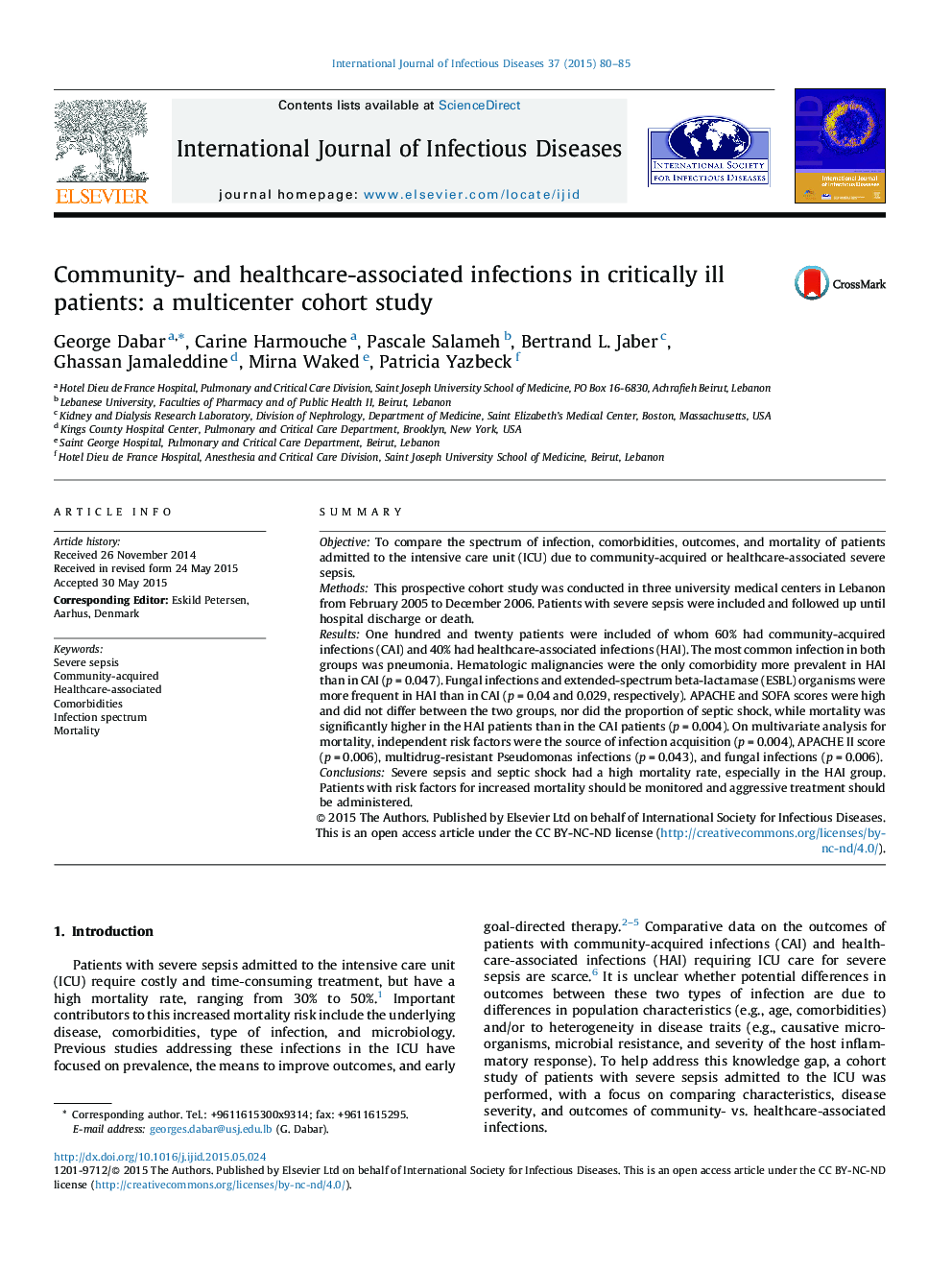| کد مقاله | کد نشریه | سال انتشار | مقاله انگلیسی | نسخه تمام متن |
|---|---|---|---|---|
| 3362110 | 1592058 | 2015 | 6 صفحه PDF | دانلود رایگان |
• The most common cause of severe sepsis requiring intensive care unit admission was pneumonia.
• A high proportion of our patients had extended-spectrum beta-lactamase pathogens (16%).
• Mortality was significantly higher in the hospital-acquired infections group than in the community-acquired infections group.
• Independent risk factors of mortality were the source of infection acquisition, the APACHE II score, multidrug-resistant Pseudomonas infection, and fungal infection.
SummaryObjectiveTo compare the spectrum of infection, comorbidities, outcomes, and mortality of patients admitted to the intensive care unit (ICU) due to community-acquired or healthcare-associated severe sepsis.MethodsThis prospective cohort study was conducted in three university medical centers in Lebanon from February 2005 to December 2006. Patients with severe sepsis were included and followed up until hospital discharge or death.ResultsOne hundred and twenty patients were included of whom 60% had community-acquired infections (CAI) and 40% had healthcare-associated infections (HAI). The most common infection in both groups was pneumonia. Hematologic malignancies were the only comorbidity more prevalent in HAI than in CAI (p = 0.047). Fungal infections and extended-spectrum beta-lactamase (ESBL) organisms were more frequent in HAI than in CAI (p = 0.04 and 0.029, respectively). APACHE and SOFA scores were high and did not differ between the two groups, nor did the proportion of septic shock, while mortality was significantly higher in the HAI patients than in the CAI patients (p = 0.004). On multivariate analysis for mortality, independent risk factors were the source of infection acquisition (p = 0.004), APACHE II score (p = 0.006), multidrug-resistant Pseudomonas infections (p = 0.043), and fungal infections (p = 0.006).ConclusionsSevere sepsis and septic shock had a high mortality rate, especially in the HAI group. Patients with risk factors for increased mortality should be monitored and aggressive treatment should be administered.
Journal: International Journal of Infectious Diseases - Volume 37, August 2015, Pages 80–85
